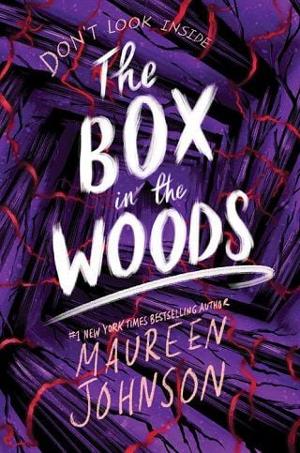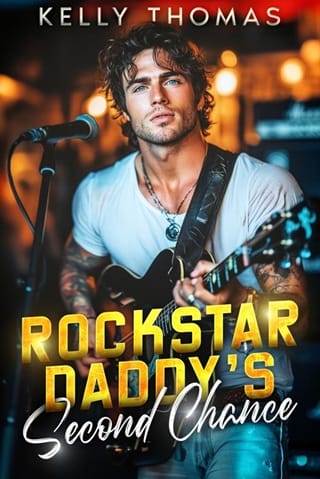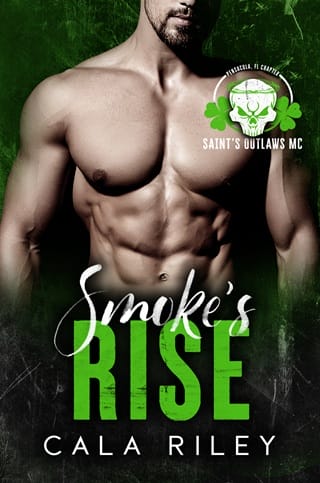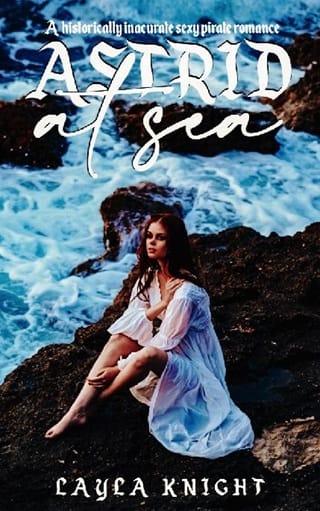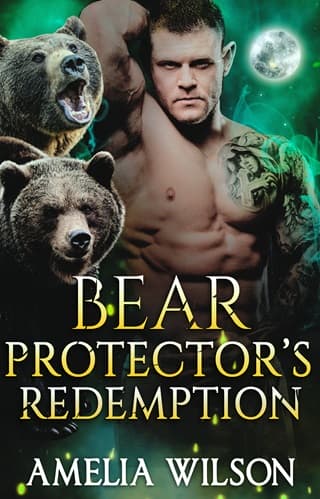Chapter 5
5
STEVIE TRIED TO FOCUS HER NEWLY OPENED EYES ON THE THINGhanging from the ceiling. What the hell was she looking at?
Oh right. The trapeze.
Stevie had spent the night in a pile of beanbags on the floor of the main room. There were several guest bedrooms in the Bounce House, but she had fallen asleep here while talking to Nate and decided to stay. She would have been content to stay there for a while longer, floating on the foam or beads, drifting in and out of sleep, but Janelle was up and moving, and it sounded like Nate was in the shower. She pushed herself up and began getting ready for the day.
Carson appeared several minutes early, not bothering to knock as he came into the barn.
“Lots to do today,” he said. “First, we’ll drive through the town so I can show you all around. Then we’ll go to the camp, get you settled in, give you the whole tour.”
The drive from Carson’s compound to the town was a sedate one. Every house had a front porch, often a screened one. Everywhere you looked there were flags, flower planters, green lawns, and shady spaces. This was the kind of town where everyone seemed to have a tire swing. There was one incredibly sharp turn along a wooded stretch, which then led them past a full-size blue billboard that read LIBERTY HIGH, HOME OF THE MIGHTY OWLS.
“Take it down a notch, sign,” Nate said. “Why are you yelling about owls?”
The sign was ridiculously huge, almost as high as the trees around it, and it seemed entirely out of place along the road. The high school it announced was a modestly sized redbrick building, midcentury and fairly ugly compared to all the other places Stevie had seen along the way. The school and its sign were then left behind for another half mile of woods and streams, before they reached a traffic light.
“This is Barlow Corners,” Carson said, turning onto a slightly busier street. “Population two thousand. This is the main drag here—all the businesses.”
There were the kinds of places you see in every small town. A boutique full of local crafts, scarves, and bric-a-brac. A savings and loan. A place for takeout tacos. A yoga studio. There was the Dairy Duchess, the diner that had been owned by Diane’s family.
He indicated a cheerful-looking coffee shop called Sunshine Bakery.
“That place over there is where we’re going first,” he said. “It’s run by Patty Horne. She was friends with at least three of the victims.”
The Sunshine Bakery was a painfully adorable small-town kind of business, painted in a half dozen varieties of yellow, from a pale buttery color to a lemon, all the way to a near-orange that mirrored the namesake sun. It had several glass cabinets of genuinely astonishing cakes on display—real works of art, detailed and sculpted. Janelle was drawn to them at once like a moth to a flame.
Behind the counter was a woman with dusty blond hair pulled up in a messy bun. She wore loose distressed jeans and a blue apron. She looked to be somewhere in her fifties, and seemed lost in thought, examining a list.
“Morning!” she said, looking a bit surprised. “Camp already? I thought the counselors were coming tomorrow?”
“These guys are special,” Carson said before anyone else could answer. “This is Stevie Bell. She was the one who solved those murders at Ellingham Academy back in the fall.”
“Oh,” Patty Horne said. Stevie could tell she didn’t really know the story but was being polite and acting like she was trying to remember the details. “Wow. That’s impressive. And you’re . . . going to be counselors?”
“Yup!” Carson said quickly. “Here to grab some coffee and . . .”
He stared at the display of baked goods under glass as if he were looking at a collection of captive spiders.
“. . . muffins? Or whatever you want. I don’t drink coffee or eat sugar.”
Stevie looked around the room, at the framed historical photos of Barlow Corners over the years, along with some portraits of an older man. Janelle was closely examining the bakery case, where three small cakes were on display. One was baby blue, with a delicate pattern of raised white edging, like Wedgwood china. There was one that was covered in butterflies, and a third that was in the form of an exploding volcano.
“Your cakes are beautiful,” Janelle said. “The detail is incredible.”
“Thank you,” Patty said. “Those are samples I did for a wedding this week. They came out really well, so I’ve left them up for display.”
“How did you even make those butterflies?”
“They’re sugar,” Patty said. “Are you interested in decorating cakes? Here. I’ll show you up close.”
She removed the cakes from the case and set them on the counter.
“For this one here,” she said, indicating the blue cake, “it’s designed as a replica of a Wedgwood plate the bride’s grandmother got for her own wedding.”
“How did you get that detail?”
“For that one, I made silicone molds of the actual plate.”
Janelle’s eyes almost glowed at the words silicone molds.
“Oh no,” Nate said quietly. “She’s getting a new craft.”
There was no denying it. Janelle Franklin had never met a craft that she didn’t love.
“With the butterflies, I made them separately,” Patty went on, “but you see the vine work here . . . actually, I goofed this up a bit and had to fill in a mistake with more leaves. You can cover up a lot of things with icing. Most people work from the middle out when decorating a cake—set your main element in the middle, then go toward the edges and down the sides. It’s true that this helps in terms of not disturbing any edge work by accidentally hitting it as you go. But I’ve always preferred working from the outside in.”
“Like a crime scene,” Stevie said. She didn’t mean to say it out loud. The words slithered out on their own.
Patty looked over the edge of the cake.
“A crime scene?”
“She does this,” Nate explained.
Stevie quickly surmised that this was one of those cases where she sounded weird if she explained, but far more weird if she did not.
“What I mean is that crime scenes are processed from the outside in,” Stevie said. “First, they set up a wide perimeter, closing off the entire area, to make sure the whole scene can be looked at for things like footprints, items, tire tracks, whatever. Then they move closer in toward the body or . . .”
Patty began turning the cake aimlessly, like you might do if a random teenager popped up in front of you and told you your elaborate cake was like a crime scene.
“She does this,” Nate repeated.
“I’m not sure I’m going to look at my cakes in the same way again,” Patty replied.
“I think she’s going to remember you,” Nate said as they stepped outside with their coffees and muffins. “You have a way.”
“It just came out,” Stevie said.
“Those cakes are really impressive,” Janelle said, her thoughts still back in the bakery. “I’d love to make silicone molds. Maybe we can do it in the art pavilion? Maybe we can do a cupcake decorating session? Kids would love that, right?”
She pulled out her phone and started taking notes.
“She’s so pure,” Nate said, watching her and smiling again.
“I’m not sure I like this happy you,” Stevie replied.
“Get used to it. Or don’t. Because no one is going to see me once I get in my tree.”
On the town green, Carson was speaking to a crew that was unloading long poles from the back of a truck. In their life at Ellingham, Janelle had built a Rube Goldberg machine for a national competition. Stevie had many fond memories of Janelle dragging her poles around the workshop, welding and building and generally being a badass. The machine had come to a bad end, but that was not Janelle’s fault.
“Are you going to reenter next year?” Stevie asked, gesturing to the poles.
“Probably not,” Janelle said, understanding at once. “I’m looking for a new kind of project. I’m thinking robotics right now, but I have a few weeks to decide.”
Carson saw them and waved them over.
“Setting up for tonight’s event,” he said as they approached. “To dedicate the Sabrina Abbott Children’s Reading Room. Let me show it to you, since we’re here,” Carson said.
He marched them toward the library next to the green—a classical building painted a prim white, with two columns supporting the front portico. The library was small and a bit out-of-date, but there were several people inside, and the displays looked well-curated. Carson walked straight through the building to the more modern structure at the back. Only one person was inside—a woman in a blue wrap dress, sorting and arranging a long shelf of picture books.
This could only be Allison Abbott. The resemblance to Sabrina was unmistakable—she had the same big brown eyes, the same determined look. She looked to be in her midfifties, with short, dark hair, graying only at the temples. She looked at the coffees and muffins in Stevie’s, Janelle’s, and Nate’s hands and opened her mouth to speak.
“Sorry,” Stevie said.
“Oh, that’s okay, it’s fine,” Carson cut in. “You can drink in here.”
Allison bit her lower lip but said nothing.
“This is Stevie Bell—from Ellingham Academy,” Carson said, in what Stevie realized was going to be the standard way she would be introduced around the town. Janelle and Nate were not introduced.
The walls were painted a happy sky blue. There were lights suspended from the ceiling in the shape of fluffy clouds, and Carson proudly demonstrated the various effects he could achieve with them—bright light, pink clouds, a rainy day effect. There were readying stations with beanbags (this man loved a beanbag maybe more than anyone had ever loved anything), a fake indoor tree with a small treehouse, long, low tables for games, and racks and racks of books.
“It’s a beautiful room,” Allison said. “The kids are going to love it. We already have loads of events scheduled—story times, board game afternoons, writing classes.”
Carson nodded absently and continued fiddling with the controls for the cloud ceiling fixtures.
“My sister,” Allison said, turning to Stevie, Janelle, and Nate, “she worked here, in the library. She passed away.”
“We were going to put in a mural of Sabrina,” Carson added. “But—”
“It would be difficult,” Allison cut in. “I think the room is the perfect tribute to her, especially this.”
She indicated a giant turtle in the corner that contained bench seats and a little table, perfect for children to sit in.
“She loved turtles,” Allison said. “She would have loved that—kids reading in a big turtle.”
“Looks like we’re all good for tonight’s event?” Carson said. “Lots of people coming?”
“I think it’s going to be well attended.”
“Good! Good.” He nodded. “Well, have to get over to the camp. See you tonight at the picnic!”
Stevie took every step carefully, not wanting to spill a drop of coffee on the floor.
“So that,” Carson said as the group got back into the Tesla, “is Barlow Corners. Allison is one of the most vocal family survivors. She really keeps the case alive—stays in touch with the police, that kind of thing.”
“That’s really nice what you did,” Janelle said. “Building a reading room like that for her sister’s memory.”
“Yeah,” Carson said, pulling out onto the road. “It helps me get the town on my side, for the show. I spent a few hundred thousand—but if I play it right, the show may be worth in the millions.”
Janelle cast Stevie a sideways glance.
“Charity runs both ways, right?” Nate said from the back seat.
 Fullepub
Fullepub 